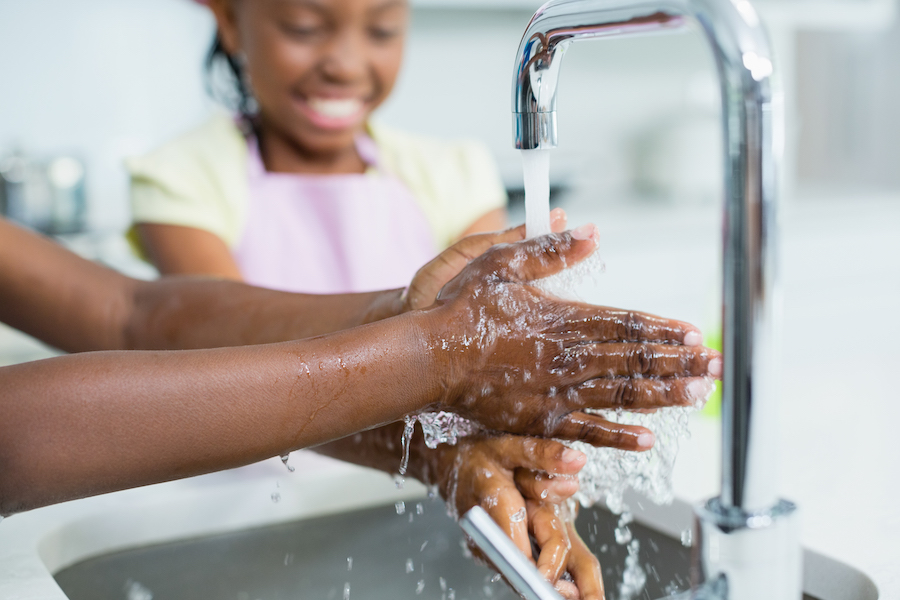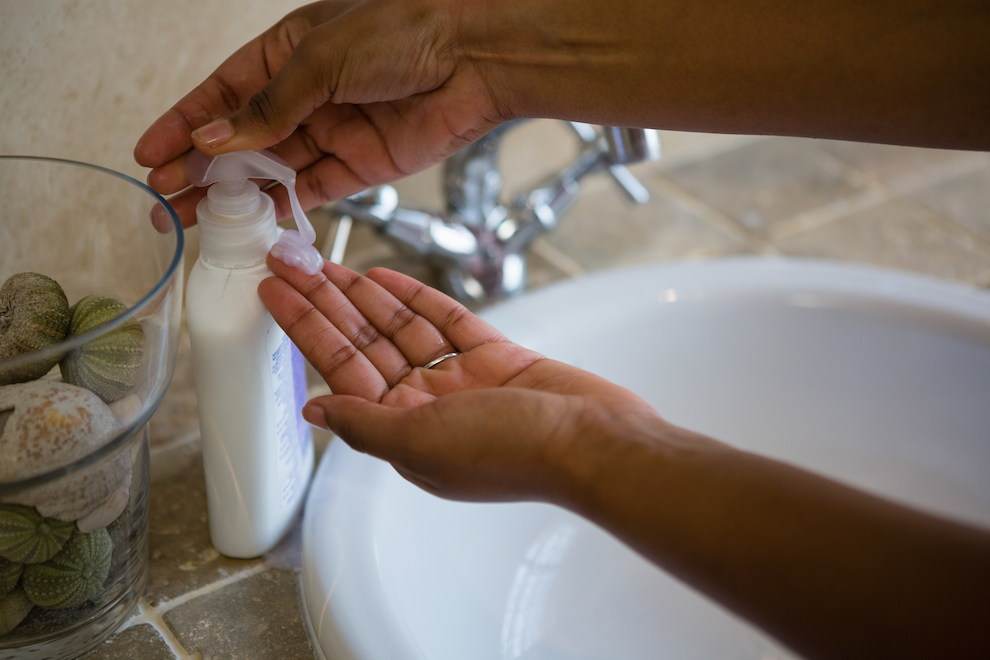Coronaviruses are a large family of viruses that may cause illness in animals or humans, and how to wash your hands will help you to avoid the spread of germs. In humans, the coronavirus causes respiratory infections ranging from the common cold to more severe diseases such as Middle East Respiratory Syndrome (MERS) and Severe Acute Respiratory Syndrome (SARS). The most recently discovered coronavirus causes coronavirus disease COVID-19. COVID-19 is an infectious disease caused by the most recently discovered coronavirus. This has placed the world in a state of lockdown and a global pandemic.

Washing hands against Covid-19
Hand washing is the best defence against the Virus. Advice is to wash your hand regularly, whether they seem dirty or not. This is because the disease spreads primarily from person to person through small droplets from the nose or mouth, which are expelled when a person with COVID-19 coughs, sneezes or speaks. These droplets are relatively heavy and do not travel very far and fall to the ground quickly. The droplets with the virus can land on objects and surfaces around the person such as tables, doorknobs and handrails. People can become infected by touching these objects or surfaces, then touching their eyes, nose or mouth. Hand washing is an effective method to kill the virus and remove it from your hands.
How to wash your hands to avoid the spread of viruses and germs? You should wash your hands for at least 20 seconds, count one Mississippi two Mississippi to twenty Mississippi. The procedure is as follows:
1. Wet your hands with water.
2. Apply enough soap to cover your hands.
3. Rub your hands together.
4. Use one hand to rub the back of the other hand and clean in between the fingers. Then do the same with the other hand.
5. Rub your hands together and clean in between your fingers.
6. Rub the back of your fingers against your palms.
7. Rub your thumb using your other hand. Do the same with the other thumb.
8. Rub the tips of your fingers on the palm of your other hand. Do the same with the other hand.
9. Rinse your hands with water.
10. Dry your hands thoroughly with a disposable towel.
11. Use the disposable towel to turn off the tap.
12. Use hand sanitiser if available.
Washing hands against Covid-19
When should you wash your hands?
You should wash your hands regularly throughout your day, even when they don’t seem dirty.
How long does the virus last on various surfaces?
On surfaces that have not been effectively cleaned with a detergent that can kill the virus the following survival rate of the Covid-19 infection is currently believed to be
Plastic, three to seven days
Stainless Steel, three to seven days
Copper up to four hours
Paper up to 4 days
Glass up to four days
Cardboard up to 24 hours
Wood up to two days
So what are the surfaces we can encounter during everyday life?
Plastic
Many objects that we use every day are made of plastic. Some examples can include:
- light switches
- pens
- telephones
- plastic bottles
- food packaging
- debit cards
- plastic counter surfaces
- computer keyboards and mouse
Metal
Metal is used in a wide variety of objects we use every day. Some of the most common metals include stainless steel, aluminium and copper. Examples include:
Metals
- door handles
- keys
- Taps
- vending machines
- metal handrails
- keys
- cutlery
- industrial equipment
- coins
- cookware
- jewellery
- electrical wires
Paper
Some examples of everyday paper products include:
- paper packaging
- newspapers
- tissues
- paper towels
- toilet paper
Glass
Some examples of glass objects that we touch every day include:
- windows
- mirrors
- drinkware
- computers and smartphones
Wood
The wooden objects that we find in our environments are often things like:
- Desks
- Furniture,
- Shelving.
- Window sills

Why does soap kill Covid-19
Coronavirus is an ‘enveloped virus’. This means it has a protective outer layer known as a ‘lipid bilayer’. The molecules making up this layer are shaped like a tadpole, with a water-loving (hydrophilic) round head and a water-hating (hydrophobic) tail.
These molecules arrange themselves into a ‘bilayer’: two layers piled on top of each other into a sheet, with tails pointing inwards and heads pointing outwards.
The molecules are pulled firmly into each other to protect the hydrophobic tails from the water in your respiratory droplets when you cough or sneeze.
The hydrophilic heads are very ‘sticky’, meaning the virus is very effective at sticking to your hands – perfect for a microbe that’s trying very hard to infect you.
Soap molecules also have this tadpole structure, which is what makes it so useful. When you have something oily on your hands, running water won’t get rid of it. Add soap to your hands – the hydrophobic tail will cling to the oil, and the hydrophilic head will stick to the water. Now, the oil will come straight off.
Because the soap molecules are so similar to the ones making up the outer layer of the virus, the molecules in the lipid bilayer are as strongly attracted to soap molecules as they are to each other.
This disrupts the neatly-ordered shell around the virus, dissolving it in the running water and killing the virus.
How to use hand sanitiser?
When used correctly, hand sanitisers can be effective against microbes, quickly reducing the amount present on hands. Hand sanitiser can be effective against the virus responsible for COVID-19 – SARS-CoV-2, however if hands are dirty, greasy or not properly clean, such as after working with your hands or handling any form of dirts, hand sanitiser may not be effective. Wash your hands effectively to ensure the the hand sanitiser can work effectively.
Add a sufficient amount of gel to cover all surfaces on both hands and fingers should be placed into the palm and rubbed all over. The gel should be rubbed in for at least 30–60 seconds and sometimes it can take 60 seconds for the gel to be effective. Hand sanitiser needs to be rubbed in and left on both hands until they dry.
What other advice is there?
Other methods to reduce the spread of COVID-19 and risk of infection include:
- More frequent hand washing with soap and water for at least 20 seconds, especially after coughing, sneezing or being in public places. Hand sanitiser may be used if that is all that can be accessed.
- Sneezing or coughing into a sleeve or tissue, not your hands. If a tissue was used, this needs to be disposed of immediately. Hands should also be washed, or a hand sanitiser used immediately after.
- Avoid touching eyes, nose and mouth with unwashed hands.
- Objects and surfaces that are regularly used should be cleaned and disinfected frequently to help avoid transmission. This includes doorknobs, keyboards, countertops, phones and toilets.
- Avoid contact with unwell people.
- NHS advice is that patients with symptoms should stay at home and self-isolate for seven days, and those who live with other people should stay at home for 14 days from the day the first person got symptoms.
- Patients who live with someone who is over 70, have a long-term condition, is pregnant or have a weakened immune system should try to find somewhere else to stay for 14 days. If this is not possible, it is important to try and stay away from the people you live with as much as possible.
Recent Posts
Could the standard of cleaning you are receiving be improved?
If you are not happy with your current cleaning contractor's service, don't just put up with it. Get yourself a company who will go the extra mile! Contact us now to help bring the standard of...
COVID-SECURE Disinfection cleaning & fogging services - Johannesburg. Fogging is a quick way to disinfect large areas and allow them to be returned to everyday use. We use a fogger machine...

